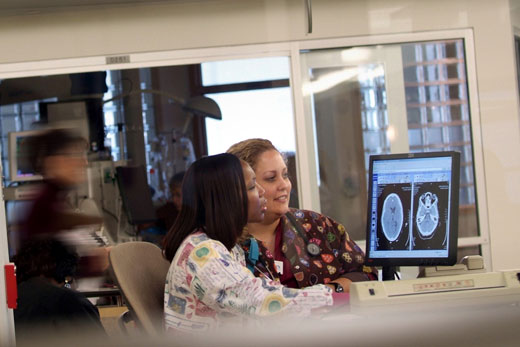Faced with a fast-changing landscape around federal research, health care funding and other economic factors, Emory's Woodruff Health Sciences Center (WHSC) has turned to a team of seasoned professionals to help address the challenge — its own employees.
Earlier this year, WHSC faculty and staff were asked to suggest ways to trim expenses, increase revenue and improve efficiency and effectiveness as part of a broad-based Financial Performance Improvement Initiative. Now, they are invited to submit their ideas for revenue enhancement and cost reductions through an easy-to-use website.
The strategy is driven by a series of economic trends now being felt at universities across the country — including reductions in federal spending for Medicare, research and medical graduate education; changes brought by the Affordable Care Act; a shift in payer mix for clinical services as the population ages; and a sluggish recovery, according to Wright Caughman, executive vice president for health affairs, CEO of the Woodruff Health Sciences Center and chairman of Emory Healthcare.
"It all triggers from the same economic realities that our society, and thus every academic health sciences center in the country, are facing," Caughman says. "Sequestration reductions have brought those realities home."
The sequester, which initiated across-the-board federal spending cuts, is projected to cost research universities and academic teaching hospitals millions of dollars of support in the coming year.
Emory could see a 5 percent reduction in federal grants and a 2 percent reduction in total Medicare payments this fiscal year alone — a total of about $25 million — with reductions expected to increase in 2014, according to Cameron Taylor, Emory's director of federal affairs.
While those adjustments pose an immediate challenge, "we're responding accordingly," says Caughman, taking action to "preserve our missions, increase efficiencies, improve effectiveness and grow our programs of distinction."
"We have great stewards, great people and we're doing everything we should be doing, using all the resources we have and taking advantage of the wisdom and observations of everyone out there on the front lines," Caughman explains.
"It's what we have to do, and we're doing it willingly," he adds.
Call for cost-saving ideas
An invitation to suggest cost-saving ideas was extended to more than 22,000 WHSC employees, including those in the Emory School of Medicine, the Nell Hodgson Woodruff School of Nursing, the Rollins School of Public Health, the Yerkes National Primate Research Center, Winship Cancer Institute, Emory Healthcare — which includes seven hospitals — and the WHSC system of clinical facilities and specialty associates.
Since an initial appeal in April, more than 300 suggestions have flowed in from many corners of the WHSC community, including physicians, administrators researchers and administrative assistants. The new website was launched to make it even easier to submit ideas.
Employee recommendations range from practical approaches to sharing resources and energy conservation ideas to billing improvements and cost-saving initiatives around reviewing vendor contracts and managing supply chain activities.
"I can't tell you how impressed I am with the thoughtfulness (we've seen) — people have been very creative, with ideas small and large," Caughman says.
"But everything adds up to help us use our resources wisely," he adds. "We really appreciate it. Everyone here is dedicated to the missions we serve. They want us to be the best."
Submissions are reviewed by a multidisciplinary team representing all units of WHSC, and many have already been put into practice, says Gary Teal, WHSC chief administrative officer.
Even modest savings are important, Teal says: "For example, with the good ideas we've received so far in WHSCAB (administrative building) alone, we're going to realize a savings of $30,000 over the next year."
Changing economic environment
Earlier this year, during his 2013 State of Woodruff Health Sciences Center address, Caughman predicted that the year would bring a "changing economic environment and growing constraints on all revenues that support the WHSC missions."
However, Caughman suggests that those changes not be viewed as a threat, rather "a once-in-a-generation opportunity to lead transformational change — to preserve what is excellent and build for the future, to use our resources wisely and exercise good stewardship, to focus on value and take responsibility and accountability."
Seeking faculty and staff input about how to do that is part of a strategy "to ensure the continued success of our promise and our missions," Caughman says.

